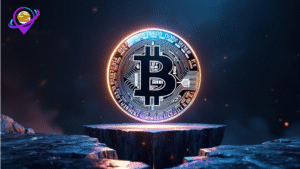XRPL’s Decade of Continuous Operation
David Schwartz, Ripple’s Chief Technology Officer, recently confirmed that the XRP Ledger has maintained continuous operation for over 10 years, processing more than 63 million ledgers. He emphasized that XRP’s transaction costs remain extremely low—just fractions of a penny—making it practical for banks and payment providers.
RippleNet currently serves over 100 financial institutions using XRP solutions for cross-border settlements, including major players like Santander and Bank of America. Schwartz indicated that at least one bank is planning to operate entirely on XRPL, which suggests growing institutional confidence in the technology. This development comes after Ripple’s settlement with the SEC in March 2025, which apparently brought regulatory clarity and fresh institutional inflows.
Market Position and Network Activity
XRP currently ranks 90th by market capitalization on CoinGecko, with approximately 77 trillion XRP in circulation. The network shows strong daily activity with increasing wallet numbers and transaction volumes, indicating sustained demand. Schwartz highlighted Ripple USD, a USD-pegged stablecoin, as a key component for liquidity management, allowing smooth transitions between yield-generating assets and stablecoins.
The Hooks Amendment introduces smart contract-like functionality through lightweight WebAssembly modules, currently available on a community testnet. Combined with ISO 20022 messaging standards, these features make XRPL compatible with international banking requirements, which perhaps explains why institutions like Franklin Templeton have chosen the platform for securities tokenization.
XBONK Partnerships and Ecosystem Growth
The XRPL-based memecoin XBONK has formalized partnerships with several major exchanges including FirstLedger, Bitrue, MEXC, and Gate.io. These integrations aim to increase accessibility across centralized platforms and enhance liquidity for retail users. The token, with 77 trillion tokens in circulation, operates on XRPL’s low-cost infrastructure.
Future collaborations with Walmart and Binance could potentially expand XBONK’s utility beyond memecoin culture into broader economic applications. This dual momentum—institutional adoption of XRP for payments combined with retail-driven assets like XBONK—demonstrates XRPL’s expanding role across both financial and consumer markets.
Institutional Adoption Trends
Franklin Templeton’s decision to use XRPL for securities tokenization highlights the platform’s scalability and cost-effectiveness. This institutional adoption complements RippleNet’s existing banking alliances and the growing retail ecosystem. The combination suggests that XRPL is finding traction across different market segments simultaneously.
While memecoins like XBONK represent the retail side of adoption, the institutional interest in XRPL’s core capabilities for banking and financial services indicates broader market validation. The platform’s decade-long operational history and recent technical enhancements appear to be paying off in terms of market acceptance.






